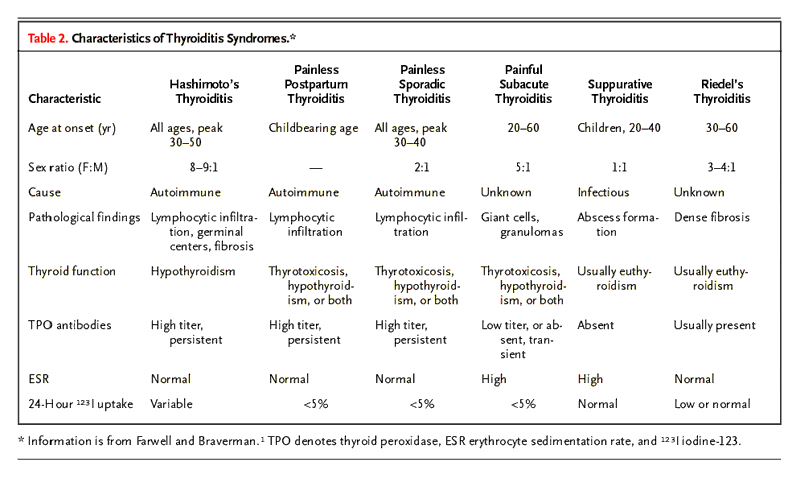Anaphylaxis |
REF: The Am J of Med Aug 2007: 120:664
|
Anaphylaxis
is an acute and potentially lethal multisystem allergic reaction. It
most often results from immunologic reactions to foods, medications, and
insect stings.
 |
 |
| Clinical
Manifestations of Anaphylaxis (at least 1 of the 3 following Sx
within minutes or hours)
Acute onset of illness within cutaneous and/or mucosal involvement and at
least 1 of the following:
-
respiratory compromise
-
hypotension, or
-
end-organ dysfunction
Two or more of the following occur rapidly after exposure to a likely allergen:
-
involvement of skin or mucosa
-
respiratory compromise,
-
hypotension or associated symptoms, or persistent gastrointestinal symptoms;
Hypotension after exposure to known allergen for that patient:
-
age-specific low blood pressure or greater than 30% decline from baseline
BP.
* Respiratory compromise and cardiovascular collapse
are resonsible fro most fatalities.
* Biphasic and prolonged Anaphylaxis:
Sx experiended during the recurrent phase may be equivalent to or
worse than those observed in the initial reaction and may occur 1-72 hours
(most occur within 8 hours) after apparent remission. Neither biphasix
nor protracted anaphylaxis can be predicted from the severity of the initial
phase of an anaphylac reaction. It may be necessary to monitor patients
24 hours or more after apparent recovery from the initial phase.
 |
|
| Diagnosis of
Anaphylaxis
Anaphylaxis remains a clinical diagnosis based on probability and pattern
recognition.
Cause and effect often is confirmed historically in patients who experience
objective findings of anaphylaxis o inadvertent reexposure to the offending
agent.
Elevated serum tryptase (reflect mast cell degranulation) may be helpful
in confirming anaphylaxis. It may peak 60-90 min after the onset of
anaphylaxis and can persist as long as 5 hours after the onset of Sx.
Differential Diagnosis of Anaphylaxis
-
The vasodepressor reaction is the condition most comonl confused with
anaphylaxis.
In vasodepressor reactions, however, urticaria and dyspnea are generally
agsent, blood pressure is usually normal or elevated, and the skin if typically
cool and pale. Although tachycardia is the rule, bradycardia may occur
during anaphylaxis.
-
Flush syndrome
-
Other forms of shock
-
Systemic mastocytosis
-
Panic attack, hyperventilation
-
Scombroid fish poisoning
 |
|
| Management
of Anaphylaxis (managed in emergency
facility)
* Assessment and maintenance of airway, breathing, circulation, and mentation
are necessary before proceeding to following Rx.
Elevate lower extremities in hypotensive patients. Administer
oxygen supplement. IV for normal saline fluid replacement.
-
Epinephrine 1:1000 IM
stat
Dose: 0.2 - 0.5 mg IM in thigh
(adult) 0.01 mg/kg (up to 0.03 mg) IM in thigh (child)
Give immediately; repeat every 5-15 min as needed. Monitor for toxicity.
Epipen (0.3 mg dose) 0.1-0.5 mg Subc
IM, may repeat every 10-15 min
[The alpha-adrenergic effect of epinephrine reverses peripheral
vasodilation, which alleviates hpotension and reduces urticaria/angioedema.
The beta-adrenergic properties of epinephrine increase myocardial outpout
and contractility, cause bronchodilation, and suppress further mediator release
from mast cells and basophils.]
-
Volume expansion with normal saline
Dose: 1-2 Liters rapidly IV in adults (5-10 mgL/kg in first 5 min); 30 mL/kg
in first hour for children.
Rate is titrated to blood pressure and pulse rate. Monitor for volume
overload.
-
Antihistamines as
Benadryl (Diphenhydramine) 25-50 mg IV (Adult); 1 mg/kg up to 50 mg (child)
Zantac (Ranitidine) 1 mg/kg IV infusion (adult), 12.5 - 50 mg infused
over 10 mim (child)
H1 and H2 antihistamine agents work better in combination than H1 agent alone.
-
Methylprednisolone (Solumedrol) 1-2 mg/kg/day
IV
Prednisone 0.5 mg/kg/d PO
* No role in acute anaphylaxis
* It might benefit patients with asthma.
-
Glucagon 1-5 mg slow IV, then 5-15 ug/min infusion in refractory anaphylaxis
patients who are on Beta-blockers.
 |
|
|